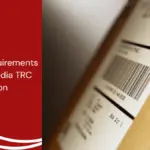Radio modem is a device that wirelessly sending or receiving digital data via radio waves using a specific frequency.
With the increasing use of radio modem, the Indonesian government through Regulation of the Director General (PERDIRJEN) No. 269 Tahun 2009 from the Ministry of Communication and Digital (KOMDIGI) has established passive optical network testing standards to ensure that these devices are safe, efficient, and do not interfere with each other.
This regulation is intended to ensure that all radio modem circulating in Indonesia must ensure their quality, safety, and compliance with applicable regulations through testing standards.
Also Read
Table of Contents
Radio Modem Testing Standard

Before being used or marketed in Indonesia, radio modem devices must meet several established technical requirements. Here are some of the standards that must be met:
General requirements
Thuraya terminals operate in the 1 to 3 GHz frequency range and can be used in both fixed and mobile systems. The service is also flexible, as it can use narrow or wide bands, covering regional to global areas, and is supported by geostationary and non-geostationary satellites.
Following the international agreement set out in the GMPCS MoU by the ITU, every Thuraya device must obtain type approval from the relevant authority. Once approved, the results must also be notified to the ITU (International Telecommunication Union) as part of the global procedure.
Electrical requirements
To pass the test, Thuraya terminals must also meet a number of technical specifications related to data transmitters. Here are some important points:
| Transmission | ||||
| Transmission Power | Frequency Range | Frequency Stability | Spurious Emissions | |
| Uncorrected | Corrected | |||
| Maximum 2 Watt | 1626.5 – 1660.5 MHz | < ±5 ppm | < ±0.006 ppm | Harmonic emissions (up to 3 fp), dB: <-8 dBm Harmonic emissions (> 3 fp), dB: <-18 dBm Spurious emissions dB: <-20 dBm |
Emission requirements
Each device must also comply with internationally established emission standards and measurement methods. In this context, Thuraya terminals refer to ITU-R M.1480 recommendations and/or EN 301 681 standards.
Essentially, all emissions outside the intended frequency band must be minimized as much as possible to ensure that other devices, whether on land, at sea, or in the air, can continue to operate without interference.
Electromagnetic compatibility requirements
In addition to emissions, devices must also pass electromagnetic compatibility tests. The objective is straightforward: to ensure that devices do not cause electromagnetic interference and, at the same time, remain resistant to external interference. For this purpose, the reference standard used is the international ETSI EN 301 489 standard.
Radio Modem Type Approval and Certification Process in Indonesia

For radio modem to be used legally in Indonesia, certification from DJID is required. Here are the steps to get it:
Pre-testing the device
Before official testing, the device must be pre-tested first using measuring equipment such as a spectrum analyzer.
This helps ensure devices meet technical standards before being tested in authorized laboratories.
Testing at an official laboratory
After passing the pre-testing, the gadget will be sent to an assigned official research facility for experience testing according to the guidelines stipulated in the Regulation of the Director General of the Ministry of Communication and Digital No. 269 Tahun 2009.
Issuance of certificates
After the device passes testing, an official certificate will be issued by DJID. This certificate is a requirement to market the device legally in Indonesia.
Tips to ensure standards compliance
- Learn the latest regulations: Make sure you understand every detail of the Regulation of the Director General of the Ministry of Communication and Digital No. 269 Tahun 2009, including technical requirements and test methods.
- Perform pre-testing: Before official testing, perform pre-testing to ensure the device meets standards. If you don’t have a measuring instrument, use the DJID certification service, which provides pre-testing services.
- Counsel a master: If this is your to begin with time looking for certification, consider utilizing the services of experienced DJID certification administrations. <UN>
















